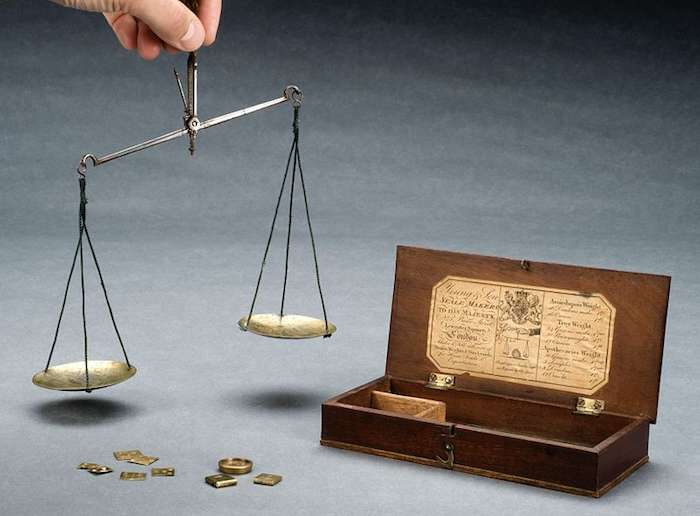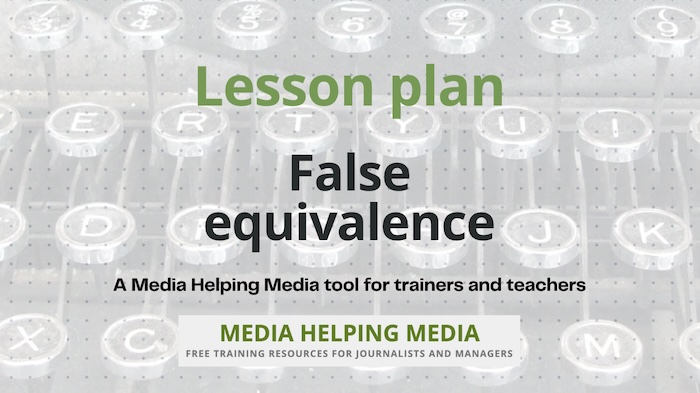
Journalists can sometimes present an inaccurate or false version of events by trying too hard to ‘balance’ a story or incorrectly treating elements of a story as being roughly equal.
This article looks at ways of avoiding two errors, applying ‘false equivalence’ and ‘false balance’, which are both about making inaccurate comparisons.
False equivalence is when you say that two or more things are the same, when in fact they are significantly different.
An example of false equivalence is to state that “politicians are all the same”. They are not. They might have similarities and some common attributes but that does not mean they are the same.
False balance is when a report suggests that two sides in a dispute have equally valid arguments, when in fact the evidence weighs heavily in favour of one side.
An example of false balance is the treatment of the climate change debate. Scientists come down heavily in favour of the proposition that human beings are causing, or at least helping to cause, global warming. A tiny minority, perhaps as low as three per cent, disagree, and it is false to represent the dispute as evenly-matched.
Ironically, many cases of false balance happen because the journalist is trying to avoid being biased.
When reporting a controversy, quite properly the journalist does not want to take sides. But sometimes it is necessary to show that one side’s arguments and evidence are much more persuasive than the other side’s.
An example here is Donald Trump’s often-repeated claim that he won the 2020 US Presidential election. He has failed to produce any evidence to support that claim and has lost numerous court battles challenging the result. So it is false to present his claim as a viable argument.
False equivalence and false balance can both be used deliberately to mislead people. They are often used in misinformation and disinformation campaigns. Or they can be examples of lazy thinking by the journalist.
Either way, they are inaccurate and care must be taken to avoid using them. In order to avoid using false equivalence and false balance keep the following in mind:
- Justify: When you are tempted to say that two or more things are equal, ask yourself if you can justify the statement.
- Explain: If the comparison is likely to be controversial, explain why you think it is valid.
- Validate: Do not accept or repeat other people’s statements of equivalency, without testing their validity.
- Reflect: When covering a dispute, make sure you reflect accurately all sides of the argument. If some of the arguments are questionable, explain why.
It’s important to keep in mind that it is not biased to expose deficiencies in an argument, as long as you subject all sides to the same level of scrutiny.

Questions
- What is false equivalence, and how does it differ from false balance in journalism?
- Provide an example of false equivalence mentioned in the text.
- Explain why false balance can be misleading in journalistic reporting.
- How might a journalist unintentionally create false balance when reporting on a controversy?
- Discuss the potential consequences of using false equivalence and false balance in media.
- Why is it important for journalists to test the validity of statements of equivalency?
- How can journalists ensure they are accurately reflecting all sides of an argument in their reporting?
- Analyse the role of bias in the context of false balance and false equivalence. How can journalists avoid it?
- Evaluate the statement: “It’s important to keep in mind that it is not biased to expose deficiencies in an argument, as long as you subject all sides to the same level of scrutiny.” What does this imply about journalistic integrity?
- Synthesise the strategies mentioned in the text to avoid false equivalence and false balance. How can these strategies improve the quality of journalism?
Answers
- False equivalence is when two or more things are presented as the same, despite significant differences. False balance occurs when a report suggests that two sides in a dispute have equally valid arguments, even when evidence heavily favours one side.
- An example of false equivalence is the statement “politicians are all the same,” which overlooks their differences.
- False balance can mislead by suggesting that both sides of an argument have equal merit, even when evidence strongly supports one side over the other.
- A journalist might unintentionally create false balance by trying to avoid bias and presenting both sides equally, even when one side lacks substantial evidence.
- Using false equivalence and false balance can mislead audiences, contribute to misinformation, and undermine trust in journalism.
- Testing the validity of statements of equivalency is crucial to avoid spreading misinformation and to ensure accurate reporting.
- Journalists can ensure accuracy by thoroughly investigating all sides, presenting evidence, and explaining why some arguments may be more credible than others.
- Bias can arise when journalists fail to critically evaluate the evidence for each side. Avoiding bias involves scrutinising all arguments equally and presenting evidence-based conclusions.
- This statement implies that journalistic integrity involves critically evaluating all arguments and presenting evidence-based conclusions, rather than striving for artificial balance.
- Strategies to avoid false equivalence and false balance include justifying comparisons, explaining controversial comparisons, and scrutinising all sides equally. These strategies enhance journalistic accuracy and credibility.
Lesson plan for trainers
If you are a trainer of journalists we have a free lesson plan: False equivalence and false balance which you can download and adapt for your own purposes.
Take a look at these other modules on Media Helping Media to help you keep your journalism up to the highest standards.









